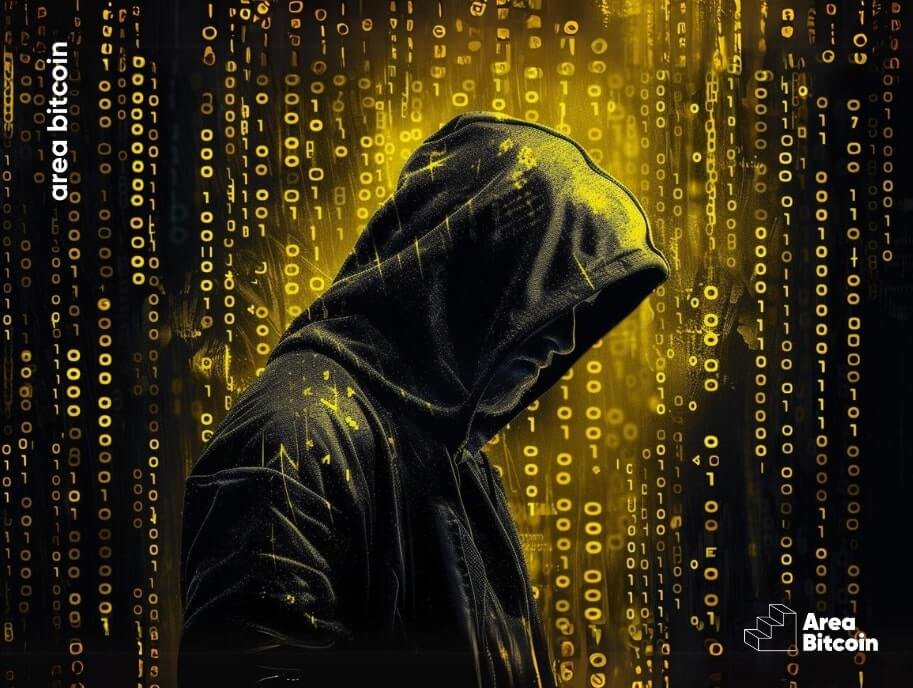To start using Bitcoin, the process is relatively simple:
- First, you will need a wallet,
- Next, you need to buy bitcoin,
- and finally, send the balance to your wallet address.
Currently, there are several types of wallets, including hot wallets and cold wallets, available in various models and brands. These wallets generate the seed and addresses at the time of setup.
However, by doing this, you end up placing a certain level of trust in the software company responsible for developing the wallet.
To mitigate this dependency, the Ian Coleman tool was created. Through it, users can generate their own seed and customize the entropy, number of words, language, and even recover addresses from already generated seeds.
What is the Ian Coleman tool?
The Ian Coleman tool is an open-source application that enables users to generate their own Bitcoin seeds and wallet addresses independently, without depending on third parties.
It was created by (guess what?) Ian Coleman, a software developer and cybersecurity expert.
With this tool, users can generate their own seeds using the BIP39 standard. This standard outlines a method for creating a sequence of words that acts as a wallet recovery key.
Additionally, it allows users to choose their desired entropy (randomness), including options such as dice rolls and card draws. This means that users can create and manage their own private keys entirely on their own, without depending on a software company.
Ian Coleman’s tool also offers features like generating and retrieving public addresses from the generated private keys and supports BIP-32. This support enables users to create unique HD (Hierarchical Deterministic) paths for their wallets.
But how exactly can we use this tool?
How to use Ian Coleman safely?
To use the Ian Coleman safely, you should first navigate to the website https://iancoleman.io and select your desired option, with the BIP39 Mnemonic Code Converter being the most common choice.
However, while this method is the most user-friendly, it is recommended to use the tool offline.
Using the tool offline enables you to generate your private keys securely, without an internet connection, thereby safeguarding against potential hacker attacks and ensuring your data remains secure.
Using Ian Coleman offline
To use the Ian Coleman offline, you’ll need to download the necessary files from the official GitHub repository and run them on your own computer.
Here’s a step-by-step guide:
- Access the official Ian Coleman tool repository on GitHub
Remember to always ensure you are downloading files from a trusted source, such as the official repository on GitHub. This helps ensure the security and integrity of the files you are using.
On the repository page, click the green ‘ Code ‘ button and select ‘ Download ZIP ‘ to download all project files in one compressed file.

- Now, extract the files from the downloaded ZIP into a folder on your computer.
- Open the index.html file in a web browser. To do this, you can simply double-click the file or drag it to the browser window.
- Once you’ve opened the ‘index.html’ file, the Ian Coleman tool will load in your browser and be ready for offline use.
With these steps completed, you’re all set to start generating your seeds and wallet addresses more securely using the Ian Coleman offline.
Next, we’ll explore how to generate your seeds within the tool.
Are you ready?!
Step by step to create a seed with Ian Coleman
Here’s a simple step-by-step guide on how to create a seed (mnemonic) using the Ian Coleman:
Step 1:
Navigate to the Ian Coleman home page and click on ‘SITE’ located below the BIP39 Mnemonic Code Converter, which is the first option you’ll see.

Step 2:
After clicking, you’ll be taken to a page where you can start the process of generating your seed:
- In the ‘Generate‘ section, choose the number of words for your seed. The most common selections are 12 or 24 words.
- In the ‘Mnemonic Language‘ field, select the language for your seed. The options typically include English, Spanish, and Portuguese.
- Ensure that BTC – Bitcoin is selected in the ‘Coin’ field. Unfortunately, this tool is not Bitcoin-only.

Furthermore, if you click on “SHOW ENTROPY DETAILS,” you’re given the option to decide how randomly your seed will be generated:

On the right side of the screen, the tool displays the accepted forms of entropy, such as dice rolls (1-6), cards (Base 10 [0-9]), Binary (Binary [0-1]), etc. By default, the tool selects hexadecimal randomness.
If you opt for other forms of entropy, like dice or cards, you’ll need to input the resulting numbers yourself into the “ENTROPY” field.
For this tutorial, however, we will stick with the entropy provided by the tool itself.
Step 3:
Once everything is set, simply click on “GENERATE.” The tool will then calculate and display the generated seed information in the respective fields.

Step 4:
Now that you’ve generated your seed, make sure to write it down and store it in a secure location. This seed is crucial for recovering your balance.
Step 5:
Further down the same screen, you’ll find the public and private addresses derived from your seed. These public addresses are where you will send your Bitcoin balances.

And there you have it! That’s how to generate a seed using the Ian Coleman tool.
It’s very easy, right?!
However, it is also important to highlight that this tool is not just for that. It is also possible to find addresses from an existing seed.
Let’s see how it works?
Finding addresses from the seed phrase
To retrieve addresses from a seed phrase using the Ian Coleman, it’s important to prioritize security by using the tool offline. This tutorial will guide you through the process of extracting addresses from a specific private key created for demonstration purposes.
Test private key
“void come effort suffer camp survey warrior heavy shoot primary clutch crush open amazing screen patrol group space point ten exist slush involve unfold”
Passphrase: TREZOR.
This passphrase acts as the 25th word of our seed phrase, serving as a password that will be entered in the “BIP39 PASSPHRASE” field.

Once you input all the necessary information, including the private key and passphrase, you’ll be able to view your addresses in the ‘DERIVED ADDRESSES’ section:

In the “DERIVATION PATH” field, you have the option to select the type of address you wish to view, depending on your wallet’s compatibility.

For instance, if your wallet supports Segwit addresses, which typically start with a “3,” you should select the BIP 141 derivation path in the “DERIVATION PATH” field to find all relevant addresses associated with your wallet.
If you want to understand more about all types of addresses, check out our article: Types of Bitcoin Address.
Why use this tool?
There are a few reasons why someone might choose to use the Ian Coleman tool to create your Bitcoin wallet:
- It’s free: Users can create a wallet without the need to purchase hardware wallets, which can be costly.
- Autonomy: The tool, being open-source, eliminates the need to trust 3rd parties, like software companies, to generate your wallet seeds. Users have the autonomy to create and manage their keys independently.
- Customization: An interesting fact from the Ian Coleman tool is the ability to choose the entropy for seed creation and its compatibility with the BIP-32 standard. This allows for specifying exclusive HD paths, offering a high level of customization.
Despite these advantages, there are important considerations to be aware of.
What are the risks of using Ian Coleman?
Ian Coleman is a really cool tool, providing an open-source resource with numerous features and serving an educational purpose for those interested in understanding seed generation and conducting tests.
However, there are associated risks, particularly for beginners or those without the technical expertise to ensure its use offline.
Incorrect use of the tool could result in unintentional information leaks. If seeds are exposed to malicious actors, they could potentially steal balances from the generated wallets.
Consequently, it’s advised not to use the Ian Coleman tool unless you possess advanced technical knowledge to operate it offline securely.
Nevertheless, the tool serves as an excellent educational resource, allowing users to experiment, explore, and learn about seed generation, entropy, and address creation, thereby offering a valuable way to engage with Bitcoin.
Caution: Beware of Fake Websites!
A critical cautionary note is the existence of fake Ian Coleman websites. Scammers have been known to sponsor these counterfeit sites on search engines like Google.
See the example below:

Always exercise extreme caution to ensure you are on the official website and running the correct files to avoid falling victim to these scams.
Conclusion
Now that we’ve explored what the Ian Coleman is, its features, how to use it, and both its advantages and risks, it’s important to highlight that this represents another significant open-source tool freely available to anyone interested in learning about Bitcoin custody.
For those who have been involved with Bitcoin for a while, the importance of securely storing your satoshis in a Bitcoin wallet is well understood. The method of generating seeds is a critical component of this security, and the Ian Coleman empowers you to take control of this process independently.
While today’s market offers a variety of highly secure hardware wallets, the availability of open-source tools like Ian Coleman is invaluable. These open-source tools provide an alternative that eliminates reliance on third-party providers, thereby enhancing user autonomy.
We encourage you to take up the challenge: dive into the Ian Coleman tool, generate a test seed to grasp its functionalities, and further your understanding of Bitcoin. This step will not only bolster your knowledge but also enrich your experience with Bitcoin’s technological aspects.
We hope you found this article informative and insightful. Until next time and Opt Out!
Share on your social networks:

One of the leading Bitcoin educators in Brazil and the founder of Area Bitcoin, one of the largest Bitcoin schools in the world. She has participated in Bitcoin and Lightning developer seminars by Chaincode (NY) and is a regular speaker at Bitcoin conferences around the world, including Adopting Bitcoin, Satsconf, Bitcoin Atlantis, Surfin Bitcoin, and more.
Did you like this article? Consider buying us a cup of coffee so that we can keep writing new content! ☕







